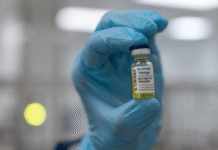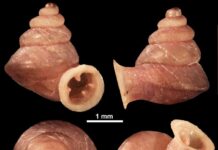MALAYSIAN based company Sentinext Therapeutics Sdn Bhd (Sentinext) is developing a vaccine against a strain of enterovirus that causes hand, foot and mouth disease (HFMD) – a condition commonly affecting children and which can lead to deadly infection of the brain and spinal cord membranes.
HFMD causes fever and blisters around the hands, feet and mouth and is transmitted by contact with faecal matter, blisters or saliva of an infected person. It largely affects susceptible children, mostly between the ages of six months and five years.
The disease is caused by a variety of different germs including one from a group called enteroviruses. The enterovirus 71 (EV71) is of particular concern as it can cause severe disease in infected children, sometimes leading to potentially fatal meningitis and encephalitis.

Approximately 65-70 percent of cases in South East Asia are currently caused by EV71, thus the urgent need for a vaccine to prevent this disease from prevailing.
Established in 2007, Sentinext focuses on building innovative vaccines to protect Asian populations against infectious viral diseases.
Sentinext chief scientific officer, Dr Jane Cardosa, has worked extensively on tropical diseases and viruses such as EV71, dengue and viral encephalitis.
She was involved in designing and constructing virus-like particles for HFMD vaccines to trigger production of necessary antibodies to fight the viral infection.
Sentinext has been focusing on the development of a Best-in-Class HFMD vaccine using its proprietary Virus-like particle (VLP technology).
The vaccine is currently at Phase 1 clinical trial in Melbourne, after the successful trials on animal specimens were concluded.
The VLP-based vaccine is intended to protect against 95 percent of viruses causing HFMD in comparison to EV71 vaccines that give protection against only 65-75 percent of viruses.
“Up to 35 percent of the HFMD cases during outbreaks are caused by CVA16, whereas, all competing vaccines are monovalent EV71 vaccines.
This gives an advantageous platform to bivalent vaccine as an EV71 monovalent vaccine will not protect against HFMD caused by CVA16 and virological diagnosis will be required in efficacy trials,” said Cardosa in an interview with BioSpectrum Asia in 2013.
Cardosa has taken a bivalent formulation approach that will facilitate protection against the viruses.
“Bivalent HFMD vaccine will facilitate efficacy trials with protection against HFMD as the clinical endpoint,” says Cardosa.
Sentinext’s dedicated R&D team in Penang, Malaysia, has built a strong Intellectual Property portfolio to address several key challenges. These include strategies to correctly assemble the complex VLPs in yields appropriate for commercial manufacturing, and expansion of the versatility of the VLP technology to be used as the basis for Sentinext’s next vaccines.
For developing HFMD vaccine, Sentinext has adopted “plug and play” molecular design allowing control over capsid amino acid sequence, and keeping up with changes in circulating strains.
“Coding sequences are DNA, not enterovirus RNA which is prone to mutation and generates a quasi-species population of virions.
“This allows Sentinext to change genotype composition of vaccine if evolutionary divergence takes place requiring a change in vaccine composition. It also provides the option of formulating the vaccine with more than one serotype,” she explained.
Cardosa and her team have garnered support of internationally acclaimed scientific advisers, and has developed strong collaborations in the US, Europe and Australia.
The company is conducting research and development activities, as well as manufacturing and is taking the vaccine through regulatory process with the European Medicines Agency (EMA).
Sentinext receives investment from MTDC through its venture capital arm since July 2008 for the development of the HFMD vaccines.

















